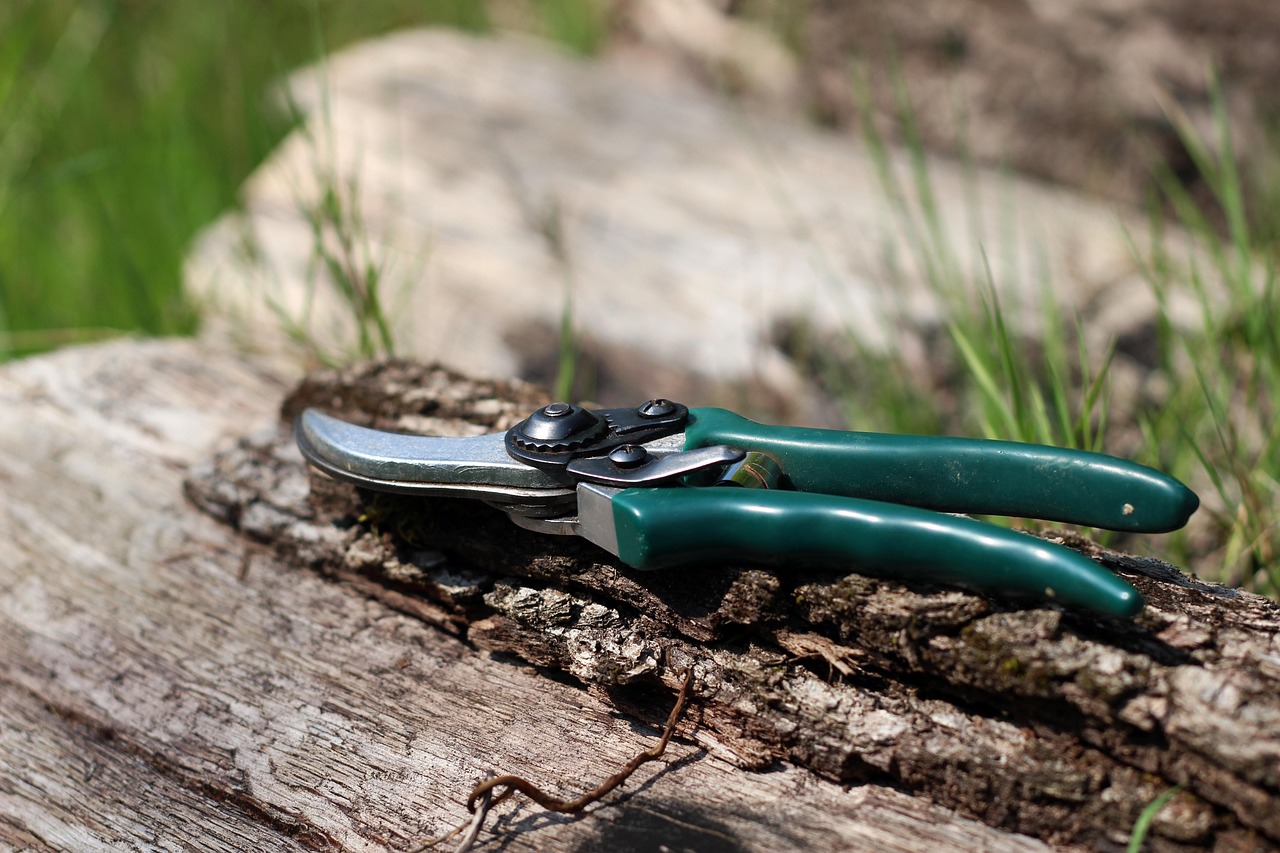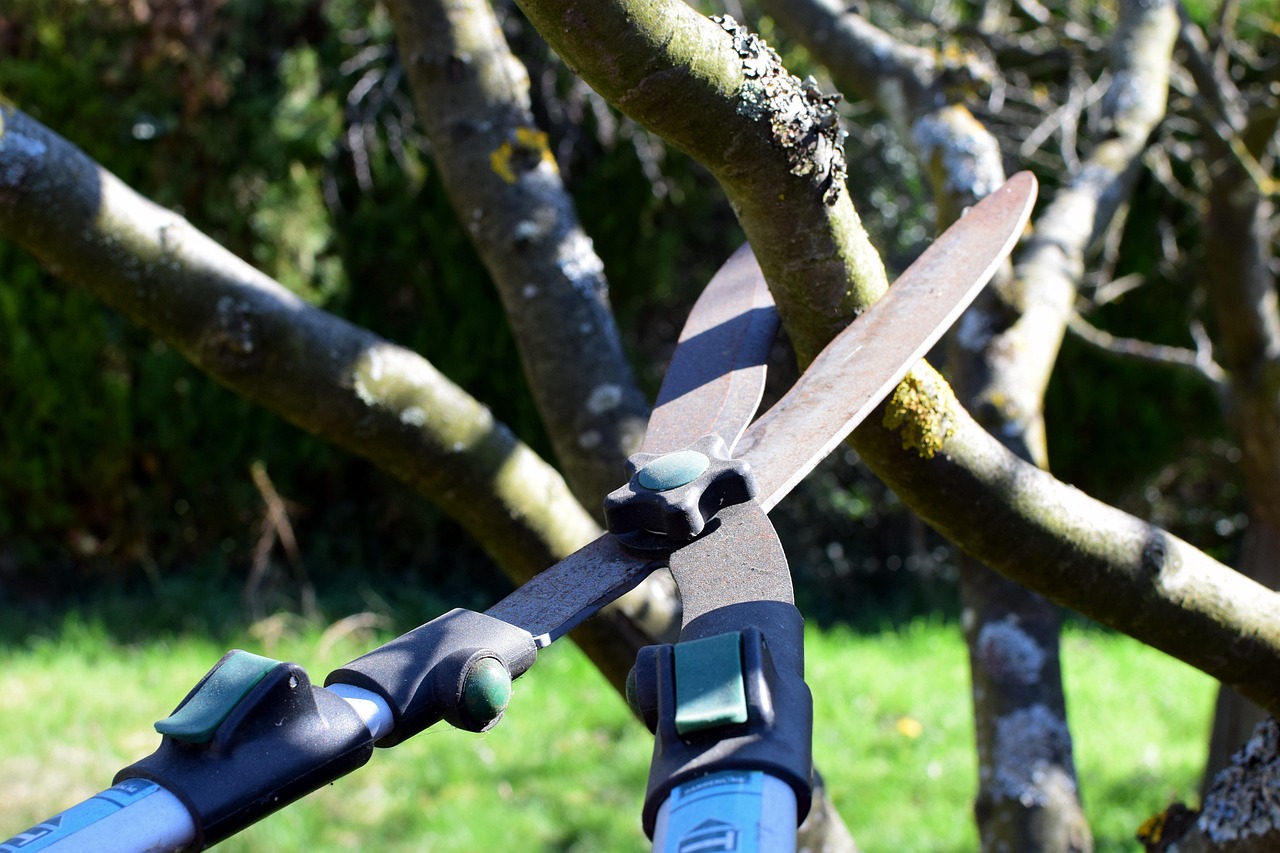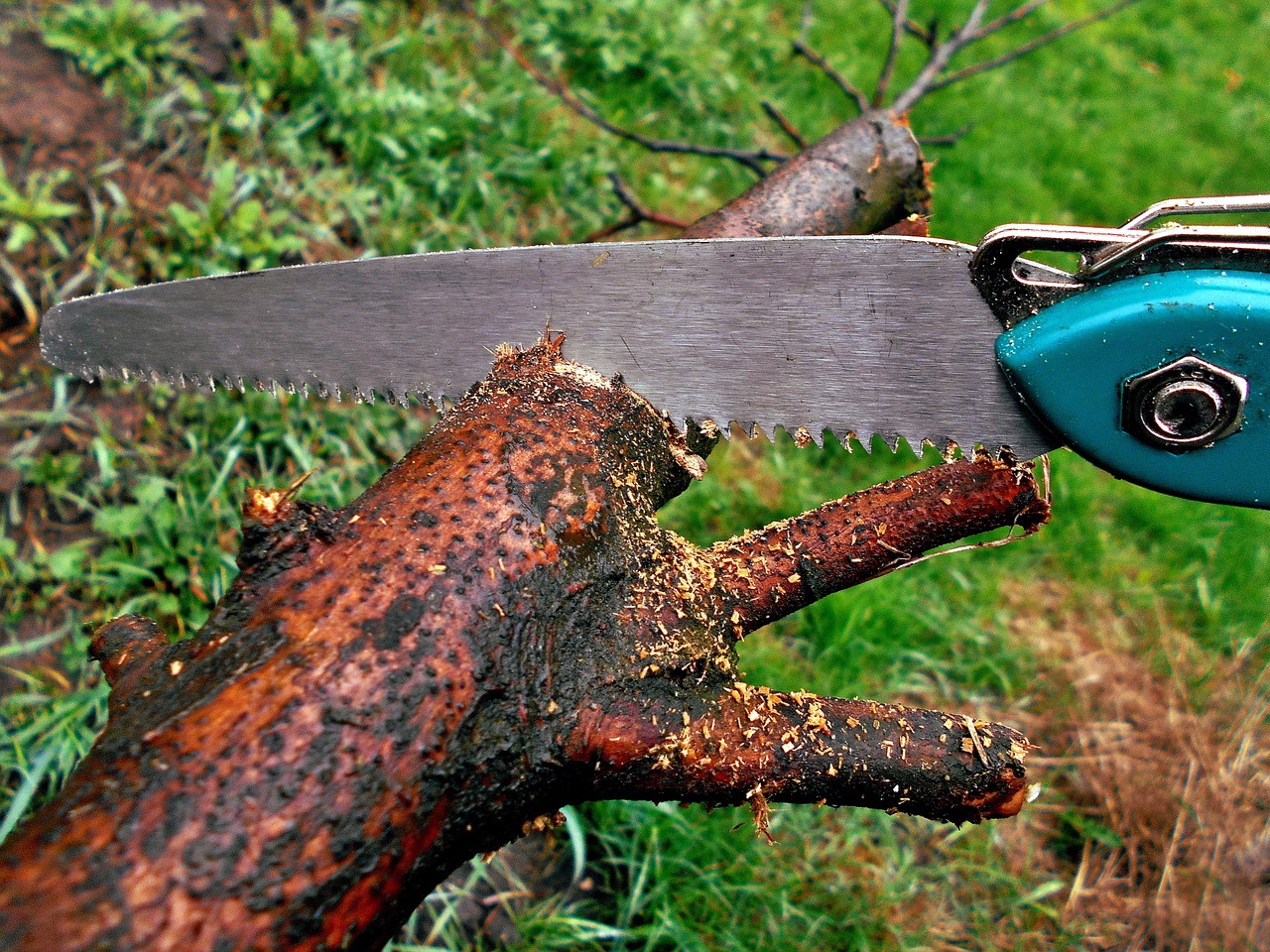Specialized pruning methods for rare species focus on preserving the unique characteristics of these plants while promoting their health and growth. Techniques may include selective cutting, training branches, and minimizing stress during the pruning process.
Pruning is essential for maintaining the health of various plant species. It is particularly crucial for rare species, which often require special attention due to their limited numbers and specific habitat needs. These species can be sensitive to environmental changes and may not respond well to standard pruning methods, making specialized techniques necessary.

Rare plant species face numerous threats, including habitat loss, climate change, and invasive species. Pruning can help mitigate some of these challenges by encouraging healthy growth and improving overall plant vigor. By understanding the unique requirements of each rare species, horticulturists can tailor their pruning practices to better support these plants.
Understanding Rare Species and Their Needs
Rare species are defined as plants that exist in limited numbers or restricted habitats. This can make them vulnerable to extinction. Understanding their biological and ecological needs is essential for effective pruning. Here are some key factors to consider:
- Habitat: Many rare species thrive in specific environments. Disruption of these habitats can impact their health.
- Growth Patterns: Rare plants may have unique growth habits that require specialized pruning techniques.
- Genetic Diversity: Maintaining genetic diversity is crucial for the survival of rare species. Pruning should aim to support this diversity.
- Stress Factors: Rare species may be more susceptible to stress. Minimizing stress during pruning is vital.
By considering these factors, horticulturists can develop a tailored approach to pruning rare species that promotes their long-term health and resilience.

Specialized Pruning Techniques
Various specialized pruning techniques can be employed depending on the specific needs of each rare species. Here are some commonly used methods:
Selective Pruning
This method involves removing only specific branches or sections of a plant. Selective pruning helps maintain the plant’s structure while allowing it to thrive. This technique is particularly useful for species that have distinctive growth patterns or forms.
Training and Shaping
Training involves manipulating the growth of a plant to achieve a desired shape or form. This can be important for rare species that require a certain structure to survive in their natural habitat. Techniques such as tying branches or using support structures can help guide growth.

Thinning
Thinning is the process of removing excess branches to improve light penetration and air circulation within the plant. This method can reduce competition among branches and help prevent diseases, which is particularly important for rare species that may be more susceptible to infections.
Crown Reduction
Crown reduction involves shortening the height of a tree or shrub while maintaining its natural shape. This technique can be beneficial for rare species that may grow too tall or become unmanageable in a particular environment.
Seasonal Pruning
Timing is crucial when pruning rare plants. Seasonal pruning refers to the practice of pruning at specific times of the year when a plant is less stressed. For many species, this means avoiding pruning during active growth periods or during extreme weather conditions.

Tools for Specialized Pruning
Having the right tools is essential for effective specialized pruning. The following list outlines some common tools used in this process:
- Hand Pruners: Ideal for small branches and delicate cuts.
- Loppers: Useful for thicker branches that require more leverage.
- Saws: Needed for larger cuts on trees or shrubs.
- Pruning Shears: Perfect for precision work on small plants.
- Tape and Ties: Helpful for training and supporting branches.
The choice of tools can affect the outcome of the pruning process. Using clean, sharp tools minimizes damage to the plant and reduces the risk of disease transmission.
The Importance of Monitoring After Pruning
After specialized pruning, it is crucial to monitor the health of rare species. Regular checks can help identify any issues that may arise post-pruning, such as stress or disease. This ongoing observation allows horticulturists to make timely adjustments to care practices and ensure the continued health of these vulnerable plants.
In summary, understanding specialized pruning methods for rare species requires knowledge of their unique needs and challenges. By employing targeted techniques and proper tools, gardeners and horticulturists can help ensure the survival and flourishing of these important plants.
Pruning Techniques for Specific Rare Species
Different rare species often require distinct pruning techniques tailored to their biological and ecological characteristics. Understanding these specific needs can greatly enhance the effectiveness of pruning. Below are several examples of rare species and the specialized pruning methods best suited for them.
1. Endangered Tree Species
Endangered trees often face threats from habitat loss and climate change. Pruning these species must be done carefully to promote growth while protecting their natural form. Key techniques include:
- Selective Thinning: This method removes certain branches to allow sunlight and air to reach the lower parts of the tree.
- Weight Reduction: Reducing the weight on heavy branches can prevent breakage during storms, helping to maintain the tree’s integrity.
- Formative Pruning: Young trees may need formative pruning to establish a strong structure early in life.
2. Rare Shrubs
Rare shrubs often have specific growth patterns that require a gentle touch during pruning. The following techniques are effective for these plants:
- Pinching: This technique involves removing the tips of young shoots to encourage bushier growth.
- Rejuvenation Pruning: For older shrubs, cutting back all stems to ground level can stimulate new growth, making it vital for their survival.
- Deadheading: Removing spent flowers can promote further blooming and prevent the plant from using energy on seed production.
3. Succulents and Cacti
Many rare succulents and cacti have unique adaptations that make standard pruning methods unsuitable. Specialized techniques include:
- Removing Old Growth: Carefully removing old or damaged leaves helps focus energy on new growth.
- Cutting Back Overgrown Stems: This technique allows for better light exposure and air circulation within the plant.
- Avoiding Over-Pruning: Since many succulents store water in their leaves, excessive pruning can lead to dehydration.
Timing for Pruning Rare Species
The timing of pruning can significantly impact the health and survival of rare species. Different plants respond best to pruning at specific times of the year, depending on their growth cycles.
Seasonal Considerations
Here are some general guidelines for when to prune rare species based on seasonal changes:
| Season | Best Practices |
|---|---|
| Spring | Ideal for pruning flowering shrubs after they bloom but before new growth begins. |
| Summer | Focus on light pruning to remove dead or damaged branches without interrupting flowering cycles. |
| Fall | Avoid heavy pruning; this is a time for maintenance and preparation for winter. |
| Winter | The best season for major pruning of deciduous trees and shrubs while they are dormant. |
The Role of Soil and Nutrition in Pruning Success
The health of rare species is not solely determined by pruning techniques. Soil quality and proper nutrition also play critical roles in successful growth and recovery after pruning. Here are important factors to consider:
- Soil Quality: Testing soil pH and nutrient levels can help ensure that the plant receives adequate support during recovery.
- Organic Matter: Adding organic compost can improve soil structure and provide essential nutrients.
- Irrigation Practices: Ensuring proper watering before and after pruning can aid recovery by reducing stress on the plant.
Incorporating soil management practices can significantly enhance the outcomes of specialized pruning, ensuring that rare species thrive in their environments.
The Impact of Environmental Conditions
Environmental conditions also affect how rare species respond to pruning. Factors such as temperature, humidity, and light exposure can influence plant health significantly. Understanding these variables is essential when planning pruning activities.
- Temperature Extremes: Pruning during periods of extreme heat or cold can stress plants, making them more susceptible to diseases.
- Humidity Levels: High humidity may increase the risk of fungal infections post-pruning, necessitating extra care.
- Light Exposure: Ensuring adequate light levels post-pruning helps promote healthy regrowth.
By considering these environmental factors, horticulturists can better time their pruning efforts to align with nature’s rhythms, thereby enhancing the well-being of rare species.
Common Challenges in Pruning Rare Species
Pruning rare species presents unique challenges that require careful consideration and planning. Understanding these challenges can help horticulturists develop effective strategies to mitigate them.
1. Sensitivity to Stress
Rare species often have a lower tolerance for stress compared to more common plants. Stress can arise from both physical pruning actions and environmental changes. To manage this sensitivity, consider the following:
- Gentle Techniques: Use softer pruning techniques that minimize damage, such as hand pruners instead of saws for smaller branches.
- Gradual Pruning: Instead of making significant cuts all at once, consider spreading pruning tasks over several seasons.
- Post-Pruning Care: Implement care practices, such as mulching and adequate watering, to help plants recover after pruning.
2. Risk of Disease
Rare species can be particularly vulnerable to diseases, especially after pruning. Open wounds may provide entry points for pathogens. Here are some measures to reduce disease risk:
- Clean Tools: Always disinfect pruning tools before use to prevent disease transmission.
- Avoid Pruning during Wet Conditions: Wet conditions can increase the likelihood of fungal infections. Choose dry days for pruning sessions.
- Seal Larger Cuts: For large cuts, consider using sealants to protect against pathogens.
3. Limited Information on Specific Species
Many rare species lack extensive research on their specific pruning needs. This knowledge gap can pose difficulties for effective management. To navigate this challenge:
- Consult Experts: Work with botanists or horticulturists who specialize in rare species to gather insights on proper pruning methods.
- Conduct Trials: Experiment with different pruning techniques on small sections of the plant and monitor results.
- Document Observations: Keep records of how each species responds to various pruning methods for future reference.
Case Studies of Successful Pruning Methods
The following case studies highlight successful pruning methods used for specific rare species. These examples illustrate how tailored approaches can lead to positive outcomes.
Case Study 1: The California Endemic
A horticultural team worked on a rare tree endemic to California that was struggling due to habitat encroachment. They implemented selective thinning and crown reduction techniques, focusing on preserving the tree’s natural shape. The results were promising:
- The tree showed improved growth rates within a year.
- New foliage appeared healthier and more robust.
- The tree became more resilient against environmental stresses.
Case Study 2: The Endangered Shrub
An endangered shrub species faced population decline due to invasive species competition. The management team employed rejuvenation pruning, cutting the shrubs back to ground level every few years. This approach led to:
- A noticeable increase in new growth and flowering.
- The shrub developed a denser form, making it less vulnerable to invasive plants.
- An increase in overall shrub population over time due to improved health.
Innovative Tools and Techniques in Pruning
The advancement of technology has introduced innovative tools and techniques that can enhance the pruning process for rare species. Utilizing these tools can improve efficiency and effectiveness.
1. Precision Pruners
Precision pruners, equipped with fine cutting blades, allow for delicate cuts that minimize damage to both the plant and surrounding area. These tools are particularly beneficial for:
- Cutting small branches or stems without excessive force.
- Accessing tight spaces in dense foliage.
2. Smart Pruning Systems
Some horticulturists now use smart systems that combine sensors and data analytics to determine the optimal time for pruning. These systems can monitor:
- Soil moisture levels
- Weather conditions
- Plant health metrics
This technology can help ensure that pruning occurs when conditions are most favorable for the specific needs of rare species.
3. Drones for Assessment
Drones are increasingly being used for assessing large areas of land where rare species grow. They can provide aerial imagery that helps identify:
- The distribution of rare species within a habitat.
- The health of individual plants from above.
- The presence of invasive species threatening rare flora.
This information can be invaluable when planning targeted pruning efforts, ensuring that conservation strategies are both effective and efficient.
Community Involvement and Education
Engaging local communities in the conservation of rare species through education and participation in pruning efforts is essential for long-term success. Community involvement can foster a sense of ownership and responsibility toward local flora.
1. Volunteer Programs
Create volunteer programs that allow community members to participate in pruning activities. These programs can include:
- Workshops: Provide training sessions on proper pruning techniques specific to rare species.
- Hands-On Experience: Organize events where volunteers assist with actual pruning under expert guidance.
2. Educational Outreach
Implement educational outreach initiatives aimed at schools and local organizations. Key components may include:
- Informational Sessions: Host talks or presentations explaining the importance of rare species and proper care methods.
- Resource Distribution: Provide pamphlets or guides on specialized pruning techniques for rare plants.
This community engagement can lead to increased awareness and support for conservation efforts, ultimately benefiting the preservation of rare species through informed pruning practices.
Future Directions in Pruning Techniques for Rare Species
As the field of horticulture evolves, so too do the methods and techniques for caring for rare species. Ongoing research and technological advancements promise to enhance our understanding of these plants and improve pruning practices. Here are some future directions that may benefit the specialized pruning of rare species:
1. Research and Development
Investing in research focused on the biology of rare species is crucial. By studying their growth patterns, responses to pruning, and overall health, scientists can develop more refined pruning techniques. Potential areas of research include:
- Genetic Studies: Understanding the genetic makeup of rare species can help determine their specific needs and vulnerabilities.
- Environmental Interactions: Investigating how different environmental factors influence growth can guide better pruning practices.
- Long-Term Studies: Conducting long-term studies on the effects of various pruning methods will provide valuable insights into the best practices for each species.
2. Integrating Technology
The integration of technology in horticulture is transforming traditional practices. Emerging technologies that can enhance pruning techniques include:
- Remote Sensing: Satellite imagery and drones can provide data on plant health and distribution, enabling targeted pruning efforts.
- Mobile Apps: Applications designed to track plant health, growth patterns, and pruning schedules can aid horticulturists in managing their rare species effectively.
- Artificial Intelligence: AI can analyze large datasets to identify optimal pruning times and techniques based on real-time conditions.
3. Collaborative Conservation Efforts
Collaboration among various stakeholders is essential for the effective conservation of rare species. This can include:
- Partnerships with Universities: Collaborating with academic institutions can lead to innovative research and practical applications in pruning techniques.
- Involvement of Local Governments: Policies that support conservation efforts can create frameworks for protecting rare species.
- Global Networks: Sharing knowledge and techniques across borders can enhance conservation strategies worldwide.
Final Thoughts
Specialized pruning methods for rare species are essential to ensure their survival and health in an increasingly challenging environment. By understanding the unique needs of these plants, employing suitable pruning techniques, and engaging with communities, we can foster a greater appreciation for biodiversity.
The application of innovative tools and technologies promises to enhance our efforts, providing more effective ways to care for these vulnerable species. As we continue to learn and adapt our practices, the collective effort towards conserving rare plants will ultimately contribute to a richer, more diverse ecosystem.
Through education, community involvement, and collaborative strategies, we not only secure the future of rare species but also promote a culture of stewardship towards our natural environment. The journey of preserving these unique plants is ongoing, requiring dedication, knowledge, and compassion from everyone involved in conservation efforts.
In conclusion, the specialized pruning of rare species is not just about cutting branches; it is about understanding the delicate balance of nature and striving to protect the unique flora that enriches our world. With thoughtful approaches and continued innovation, we can ensure that future generations will cherish these exceptional plants as we do today.
